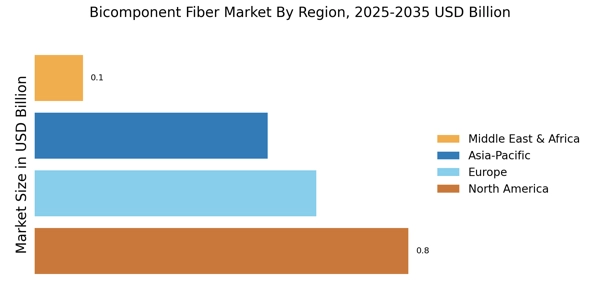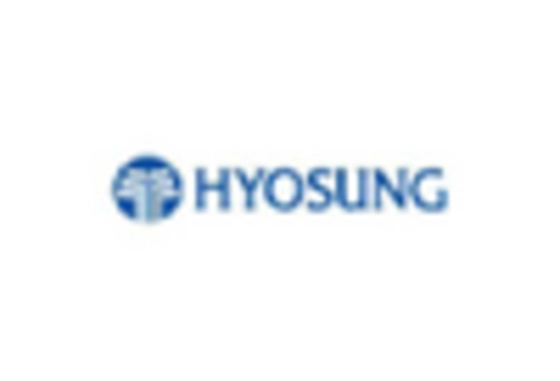Sustainability Trends
Sustainability initiatives are becoming increasingly pivotal in the Bicomponent Fiber Market. With rising environmental concerns, manufacturers are focusing on producing eco-friendly fibers that utilize recycled materials and biodegradable polymers. This shift aligns with consumer preferences for sustainable products, thereby driving demand for bicomponent fibers that meet these criteria. According to recent data, the market for sustainable textiles is expected to reach USD 100 billion by 2027, indicating a robust growth trajectory. Companies that adopt sustainable practices not only enhance their brand image but also tap into a growing segment of environmentally conscious consumers, further propelling the bicomponent fiber market.
Technological Innovations
The Bicomponent Fiber Market is experiencing a surge in technological innovations that enhance fiber production processes. Advanced spinning techniques and improved polymer blends are enabling manufacturers to create fibers with superior properties, such as increased strength and durability. For instance, the introduction of melt-blown technology has allowed for the production of finer fibers, which are essential in applications like filtration and medical textiles. This technological evolution not only improves product quality but also reduces production costs, making it more feasible for companies to invest in bicomponent fibers. As a result, the market is projected to grow at a compound annual growth rate of approximately 6% over the next few years, driven by these advancements.
Diverse End-Use Applications
The versatility of bicomponent fibers is a key driver in the Bicomponent Fiber Market. These fibers are utilized across various sectors, including automotive, healthcare, and apparel, due to their unique properties such as moisture management and thermal insulation. For example, in the automotive industry, bicomponent fibers are employed in interior components for their lightweight and durable characteristics. The healthcare sector also benefits from these fibers in the production of non-woven fabrics for surgical masks and gowns. As industries continue to explore innovative applications for bicomponent fibers, the market is expected to expand significantly, with a projected increase in demand across multiple sectors.
Economic Growth in Emerging Markets
Economic growth in emerging markets is presenting new opportunities for the Bicomponent Fiber Market. As disposable incomes rise, consumers in these regions are increasingly investing in quality textiles, including those made from bicomponent fibers. The expansion of the middle class in countries such as India and Brazil is leading to a higher demand for innovative and functional fabrics. Furthermore, local manufacturers are beginning to adopt advanced technologies to produce bicomponent fibers, which could enhance their market presence. This trend indicates a potential for significant growth in the bicomponent fiber market, as emerging economies continue to develop and consumer preferences evolve.
Rising Demand for Performance Fabrics
The growing consumer preference for high-performance fabrics is significantly influencing the Bicomponent Fiber Market. As lifestyles become more active, there is an increasing demand for textiles that offer enhanced functionality, such as moisture-wicking, breathability, and durability. Bicomponent fibers, with their ability to combine different polymer types, provide these desired characteristics, making them ideal for sportswear and outdoor apparel. Market analysis indicates that the performance apparel segment is anticipated to grow at a rate of 7% annually, further driving the demand for bicomponent fibers. This trend suggests that manufacturers who focus on developing high-performance textile solutions will likely gain a competitive edge in the market.


















Leave a Comment